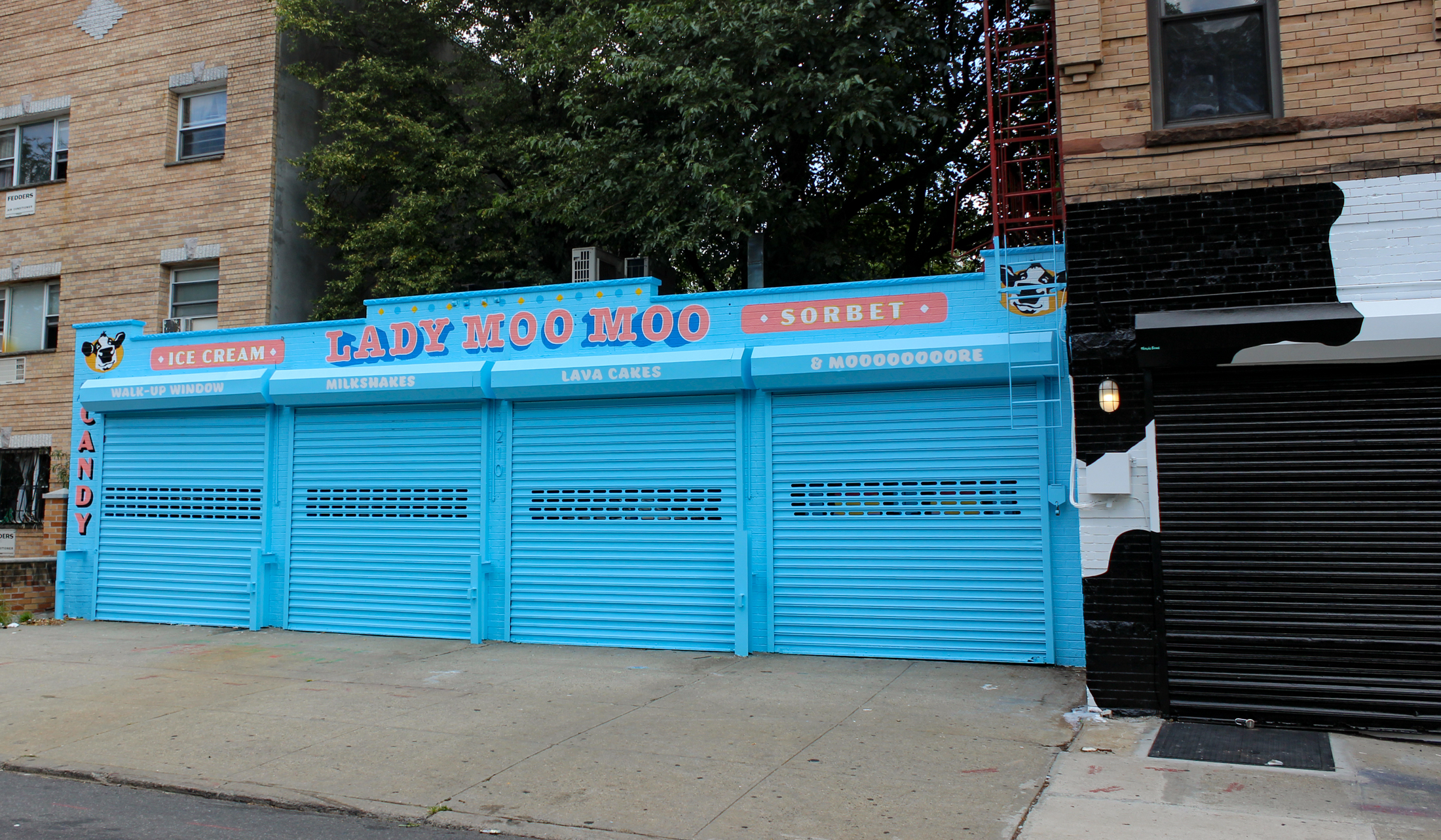Goldman Following Through on Bed Stuy Housing
Goldman Sachs may be plowing some of the profits it made from the subprime crisis back into one of the Brooklyn neighborhoods hit hardest by the meltdown. Two years ago, we reported that Goldman was teaming up with BRP (the developer behind The Clermont and the Home for Old Ladies) to build an 84-unit project…

 Goldman Sachs may be plowing some of the profits it made from the subprime crisis back into one of the Brooklyn neighborhoods hit hardest by the meltdown. Two years ago, we reported that Goldman was teaming up with BRP (the developer behind The Clermont and the Home for Old Ladies) to build an 84-unit project with lots of affordable housing on the site of a row of abandoned walk-ups on Fulton Street between Marcus Garvey Boulevard and Albany Avenue in Bed Stuy. (The group ponied up close to $10 million in late 2007 for the buildings and air rights that come with them.) Yesterday, the Bed-Stuy Blog reported that a construction fence has gone up in front of the buildings in anticipation of a controlled demolition with asbestos in place; the abatement is set to begin within the next few days. For more background analysis of Goldman’s Urban Investment Group, check out My Brooklyn Report. GMAP
Goldman Sachs may be plowing some of the profits it made from the subprime crisis back into one of the Brooklyn neighborhoods hit hardest by the meltdown. Two years ago, we reported that Goldman was teaming up with BRP (the developer behind The Clermont and the Home for Old Ladies) to build an 84-unit project with lots of affordable housing on the site of a row of abandoned walk-ups on Fulton Street between Marcus Garvey Boulevard and Albany Avenue in Bed Stuy. (The group ponied up close to $10 million in late 2007 for the buildings and air rights that come with them.) Yesterday, the Bed-Stuy Blog reported that a construction fence has gone up in front of the buildings in anticipation of a controlled demolition with asbestos in place; the abatement is set to begin within the next few days. For more background analysis of Goldman’s Urban Investment Group, check out My Brooklyn Report. GMAP
Photo from Bed-Stuy Blog





Very good DIBS maybe you can write to our politicians and tell them to stop keeping interest rates low so they can help these idiots!
If you’re going to buy a property and you’re not smart enough to understand what someone is telling about the contract, the inspection or the financing you then you get additional assistance in understanding. It’s pretty simple, actually.
ncarty – what about the chinese walls: pushing the products on one side and then selling short on the other? No fraud?
No, not really. You don’t need a monte carlo simulation to know that if when the rate resets and rates have risen even a little bit, you won’t be able to afford your house unless you have a substantive change in income levels.
The borrowers, for the most part, decided to take, or ignore, that risk. They assumed they could just refi into another ARM with the same terms infinitely.
If there was no demand for these products, there would have been no market. Again, willful ignorance on the most part by borrowers.
It doesn’t matter what you insist, the facts bear out that in most cases, there was no fraud involved.
How obvious it all seems. Take a wonderfully low rate on the one hand or a 30 yr fixed on the other. Which offers the better deal for the borrower?
Why take the lower rate of course—its as obvious as 3 card Monte. Speaking of “Monte”, you need some kind of adaptation of Monte Carlo simulation to answer the above question.
And that’s the point! All those seemingly low rate ARM’s were actually priced WAY TOO HIGH. The lenders knowingly transferred enormous risk onto the shoulders of borrowers who thought they understood them because they understood plain vanilla fixed rate loans, which are child’s play. They ate them up like delicious candy, but anybody who could price them, knew they were a scam. Even today, nobody wants to hear this. ARMS are still way too expensive.And under many of the possible future outcomes, the same thing is going to happen again. The dummies who overpay are going to get skinned by sophisticated bankers who will avoid being charged with fraud because people on the whole will keep insisting that they knew what they were doing.
“Fraud: an intentional deception made for personal gain” – wikipedia
Guilty! All participants but to a larger degree, the financial regulatory agencies (prosecute them first!). If the fraud (liar loans, liar ratings, etc) was uncovered before the crash, would have all these “victims”, down to grandma, given back their gains? Well, keep the losses too.
***Bid half off peak comps***
Lenny Dykstra just filed a suit against JP Morgan for predatory lending.
Did everyone one explain how an ARM worked? Definitely not. But I know a lot who did and it often didn’t matter. I’m talking showing actual numbers of what could happen when the rate reset. They didn’t care. Willful ignorance is abundent in this country.
And what do proprietary models matter? Those have to do with trading the securities more than how they affect the borrrower. It’s not that hard for even a simpleton to understand “When the rate resets in year 3, your payment could go as high as X.”
Stop being bitter DCB. Having ARM’s as an option for buyers isn’t fraudlent at all. Unless you can prove that the majority of ARM buyers were told incorrect data on how the ARM’s worked, it’s not industry wide fraud.
It may be stupidity (on both parts), but it isn’t fraud.
Yep, people are greedy.
But did those benevolent bankers explain to the dupes (or even know themselves) how ARM’s are priced? Did they show them there proprietary models that the investment banks spent the last 20 yrs developing, so they could make an informed decision?
ARMS are an exotic financial instrument, as is anything with a barrier feature. They seem simple to the ignorant, just like 3 card monte seems simple to the gullible. Without some very advanced computer modeling, you are just a cherry ripe for plucking. This was fraud, plain and simple, and even some high end institutions got taken in. But not Goldman, because they knew exactly what they were doing. And their payoff was huge.